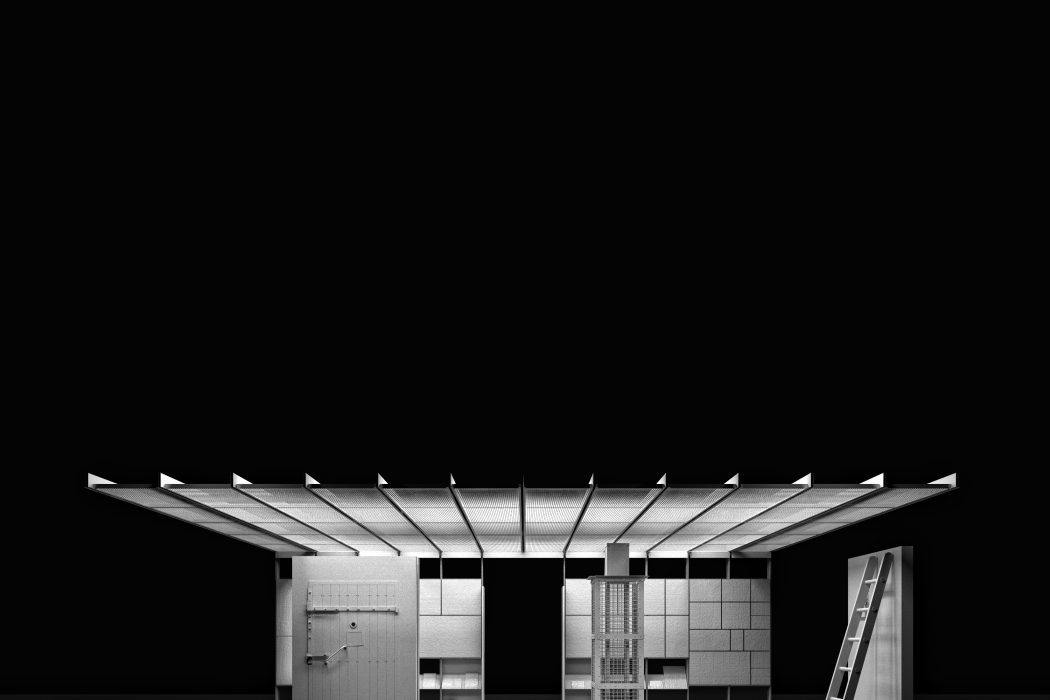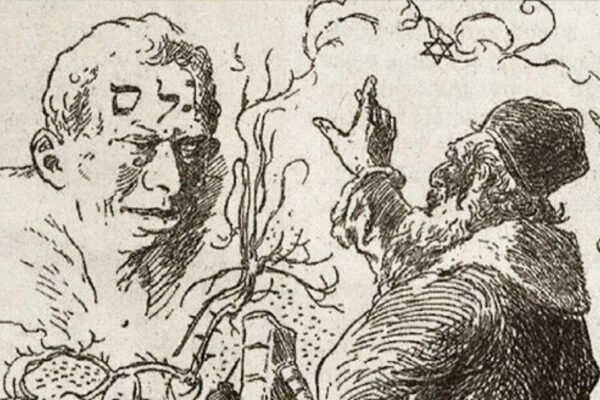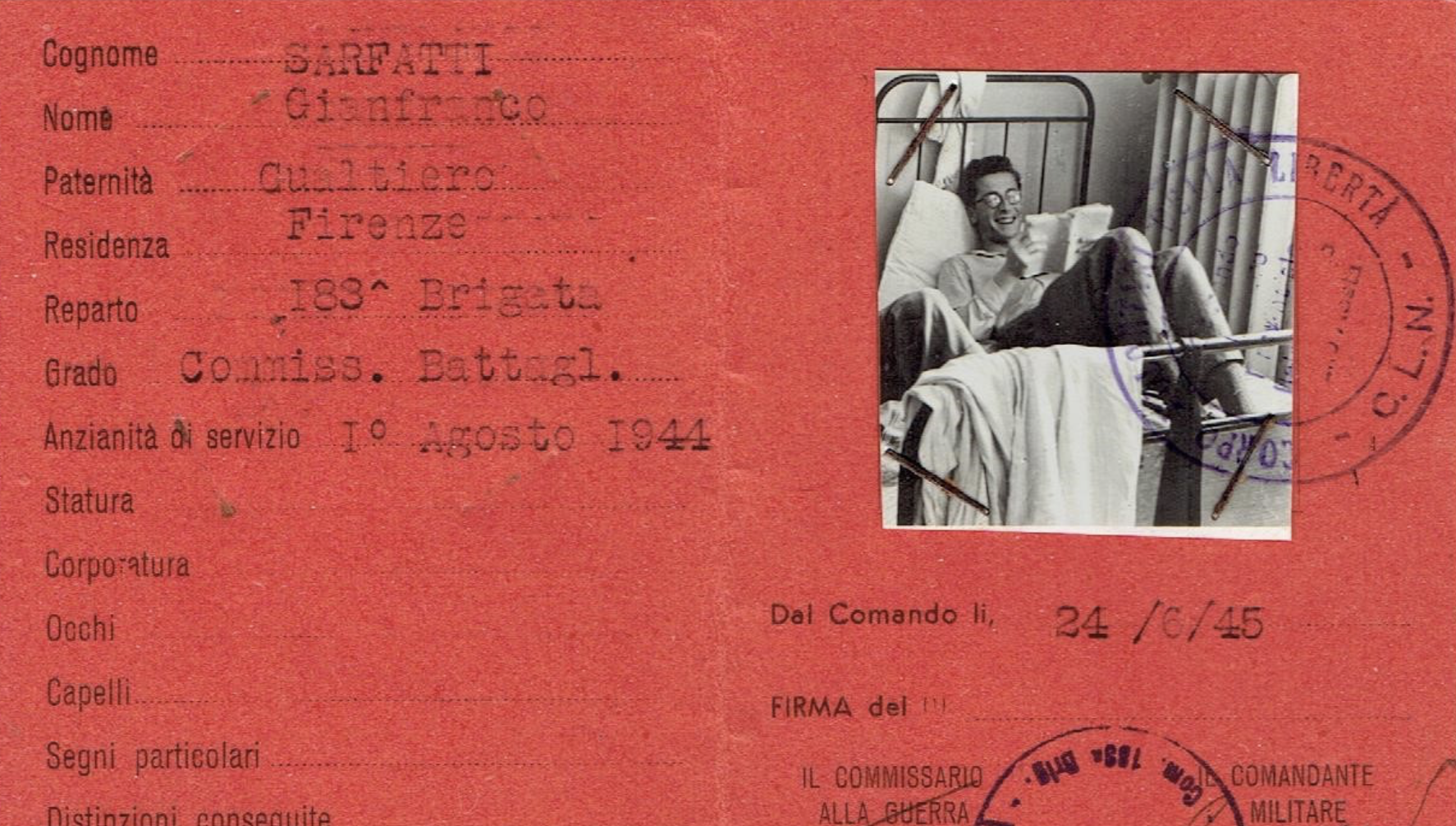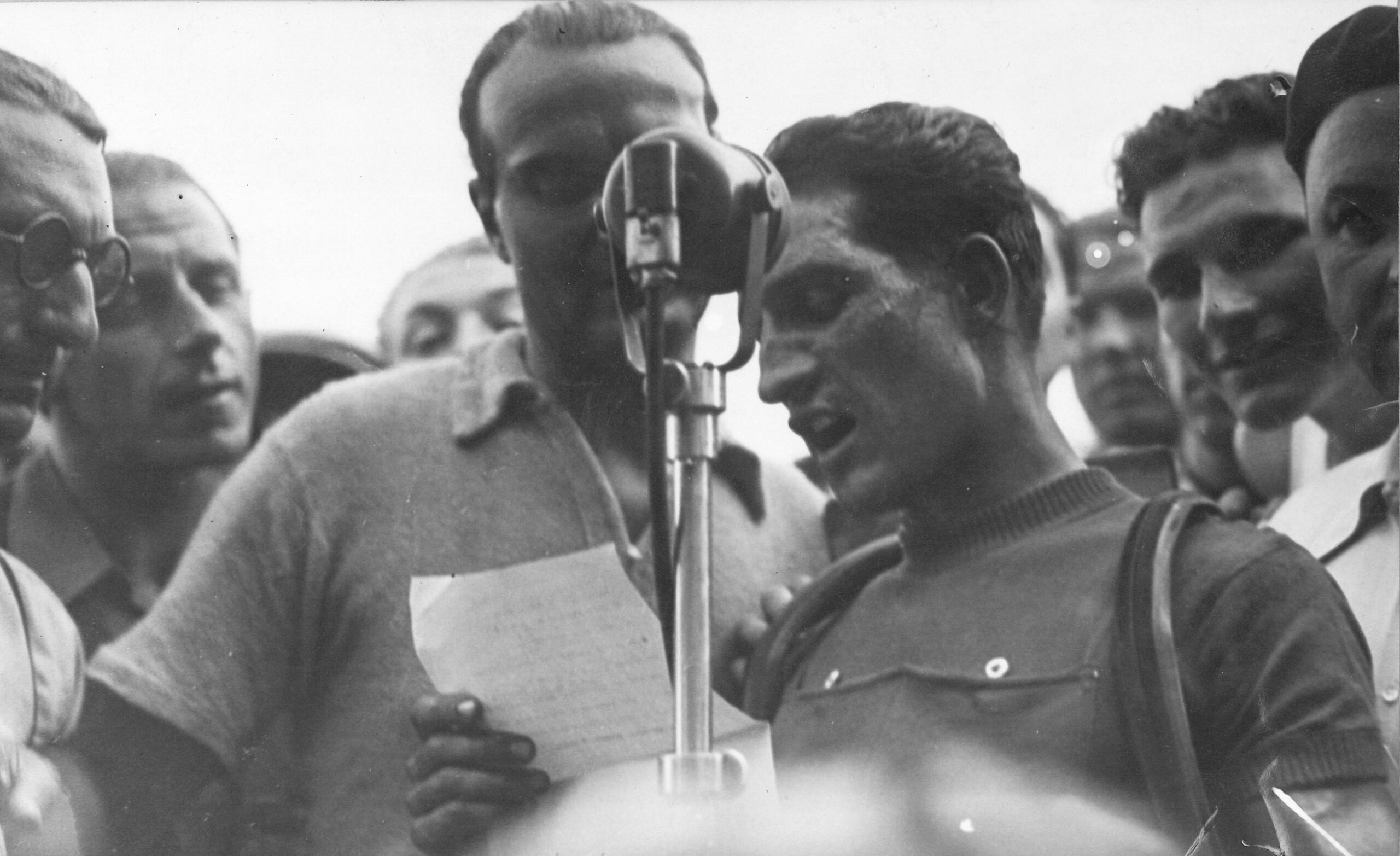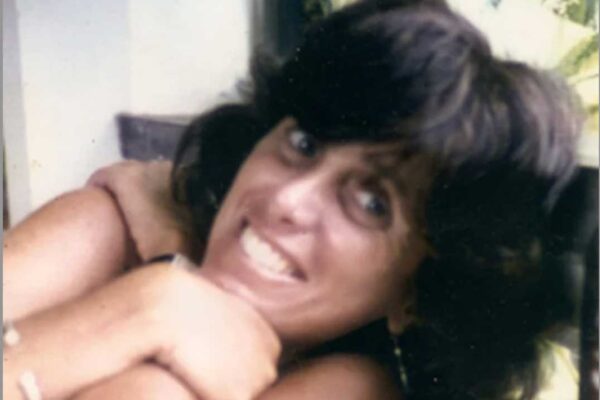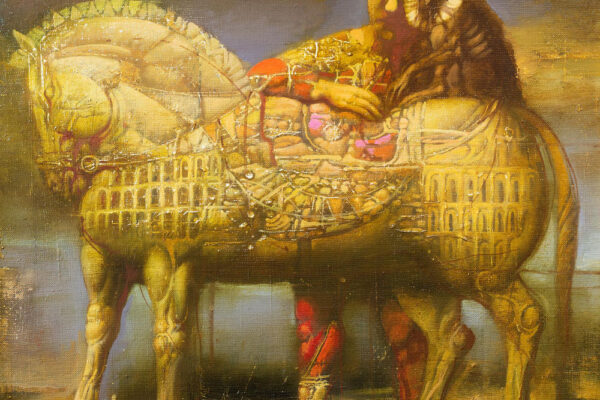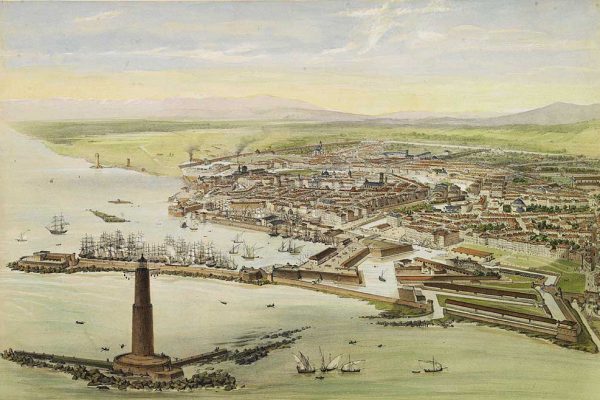The following text was given as the Sixth Annual Frederick Schweitzer Lecture at The Manhattan College Holocaust, Genocide and Interfaith Education Center (HGI Center) on November 6, 2013, the anniversary of Kristallnacht. My sincere thanks to Mehnaz Afridi for the invitation and for her inspiring work as a scholar and as a director of the Center. The essay reflects the oral presentation, with minor revisions and minimal bibliographical references.
Exactly a year ago, in the early days of November 2012, I walked my son to his first day of school. As for all parents, it was a very emotional moment. But for me there was something more: in that ample Venetian courtyard, I was not just seeing my little Samuel proudly walking to his new adventure, I was also seeing another child, standing in the very same spot, 74 years earlier. This is how that 7-year-old child, my father Roberto Bassi, narrates that fateful morning: That particular morning in October, [the teacher] had gone to her desk at the front of the class and given us a long talk, most of which I did not understand. She told us there were different races, some good, some less good; that Italy had conquered an empire, but that many dark forces were threatening the glorious progress of the Nation; that amongst these enemies of the country there were some in our very midst – the Jews – and that they should be isolated. She insisted two or three times on that notion of “enemies of the fatherland”. Then she picked up the class register, called my name and said “leave the classroom.” The caretaker had been forewarned and took me out to the school courtyard, where she said I had to wait for the end of the lessons because someone had to come and take me home.
Thus I found myself all alone in the sunny courtyard of the Diaz Primary School, and I burst into tears. In fact, there were two other children not far from me, but I made no effort to talk to them. Were they Jews, too, who had been thrown out of their classes? Or were they in the courtyard for another reason? I will never know.
With tears running down my cheeks, I stood there trying to understand why I was an enemy of Italy. It was then that the headmaster came up to me. I knew who he was already: of average height, he had a thin moustache, ‘normal’ clothes and a kind expression. He ruffled my hair gently and told me to wait calmly for my parents. “You’ll see,” he said. “Better times will come.” (Scaramucce sul lago Ladoga, Palermo, Sellerio, 2004)
What my father is describing here, writing almost seventy years after the event, is the onset of the Race Laws, issued in October 1938, declaring the Jews a different and non Italian race, and suddenly turning them into social outcasts deprived of most civil rights. A few weeks later Kristallnacht swept over Germany and symbolically started the final solution of the Jewish Question in Europe. Much worse times would come before the better times would make it possible for my father to survive and for me to be born and to be with you here today.
My talk today will be made of several flashbacks and flashforwards, perhaps to mimic the workings of memory, that is more often like an unpredictable shuttle than a one-directional vehicle. The great German cultural historian Jan Assmann has distinguished between three types of memory: individual memory, communicative memory and cultural memory. The first is based on what everyone remembers from their own personal experience; the second, communicative memory, is what is passed down directly through generations, a chain that typically connects grandparents to grandchildren and never spans more than eighty years in Assmann’s calculation; the third, cultural memory, is what is preserved in different forms and media and becomes what a given society holds in its collective memory, itself a far from linear and univocal process.
It is well known that we are now entering a phase where the individual memory of the Holocaust is physiologically disappearing with the gradual passing away of the survivors and witnesses. The responsibility lies now with the new generations, negotiating both communicative memory and cultural memory. My father’s decision to publish a book about his own story is part of larger phenomenon where the private memory of a family becomes public; only time will tell what traces his transition from communicative to cultural memory may leave for the future. Next to the grand, tragic narratives of Primo Levi or Elie Wiesel, his story is marginal, yet it reflects the destinies of many Italian Jews during the war.
Allow me now to continue to go back and forth, in the hope I will not confuse you. ‘Confusing’ was one of the criticisms directed at my father when he decided to put on the cover of his book of memoirs a family picture, showing my paternal grandfather and his three children, all sporting a Fascist uniform. How come the Jews, the main victims of Fascisms, had sometimes been card-carrying members of a dictatorial regime?
‘I hope some real neofascist buys it thinking it’s a revanchist book, and finds out about the Shoah’ my dad said jokingly. But the truth, as many of you know, is more complicated. Italian Jews, after centuries of ghettoization, gained full civil rights only in the mid-Nineteenth Century, with the unification of Italy. But the fact that they were a non-Catholic minority in an overwhelmingly Catholic country still haunted their social status. The outcasts of many centuries, the killers of the Christ of Catholic theology still had to fight to be equal, and the cause of national unification was their coveted passport to full recognition. On the outer wall of the Levantine Synagogue in Venice, where one of my ancestors served as a Rabbi in the 17th century in transition from his native Saloniki to Amsterdam, today one can read a plaque with the names of the Venetian Jews who died in the First World War. What greater sacrifice than to die for your homeland? It is instructive to read those family names, conjuring up the astonishingly cosmopolitan provenances of the heirs of a small community confined and locked in a peripheral area of Venice in 1516. Germany, Spain, Poland, Greece, France, many different Italian cities; and to read their given name, Ippolito, Augusto, Paolo; names that, with a few exceptions, declared assimilation into the Greco-Roman tradition of Italy rather than to the Bible. My father’s name, Roberto, was given in honour of Victorian poet Robert Browning by his anglophile father, and his Hebrew name, Reuven, was only to be used in religious contexts. For some Italian Jews, becoming a Fascist was the logical conclusion of a patriotism aimed at erasing any doubt concerning their Italianness. To be honest, my grandfather did not wear the Fascist uniform out of ideological conviction; he became a member of the party to support his family and to make his professional life as a lawyer a bit easier.. As the majority of Italians under Mussolini, he was a fascist by convenience, privately despising Mussolini (who in the Judeo-Venetian parlance was called the Goy Gadol – the great Gentile – but prohibiting any political talk at home. No; My grandfather was neither one of the fanatical Fascist Jews like Ettore Ovazza, nor a comitted antifascist like Renzo Foa, Primo Levi, or Carlo Rosselli, who went on to risk or lose their lives fighting for democracy before and during the war (see Alexander Stille, Benevolence and Betrayal: Five Italian Jewish Families Under Fascism, New York, Picador, 2003).
I dwell on the ambiguities of my family history to remind myself and to remind you of the uneasy relationship we entertain with our past. It is always a temptation we need to resist in positioning ourselves on a higher moral ground when we look in retrospect. It may be relevant to mention at this point that when the Fascists asked all university professors to swear aN oath of loyalty to the regime, out of 1250, only twelve refused. What would I have done as an academic? A recent book called eloquently Bad German, Good Italian (Filippo Focardi, Il cattivo tedesco e il bravo italiano. La rimozione delle colpe della seconda guerra mondiale, Bari, Laterza, 2013) explains how in the years following of the war, Italy used the minority antifascist Resistance to build a redeeming and foundational myth for the new Republic, born from the ashes of Mussolini’s Italy. It became convenient to blame all the evils of the War on the Germans, while magnifying the benevolent character of Italians. Talk to someone today, and surprisingly everyone’s grandfather or grandmothers saved a lot of Jews, hiding them in their attic or cellar. Undeniably, the majority of Italian Jews survived (as opposed to most other European countries, with radically different numbers and histories). They survived, like in the case of my father and his immediate family, thanks to the active or passive help of many fellow Italians. But it also important to remember that when in the fall of 1943 and again in the winter and summer of 1944 Jews were rounded up in many Italian cities including Venice, the Germans were not indispensable, as historian Simon Levis Sullam reminds us:
Ordinary Italians in the police, the armed forces and among the volunteers of the revived Fascist Party, but also ordinary citizens who became collaborators and informers […] got up […] shaved or did their make-up (there were women executioners directly involved), drank their coffee, greeted their families and then went out to hunt for Jews who had been their next-door neighbors, their classmates, their colleagues (perhaps their friends?). They seized property, imprisoned Jews, transferring them to transit camps and delivering them, finally, into German hands. They sent these Jews, not to some ‘unknown destination,’ but consciously, to certain death.
When in 1938 my father was expelled from school, a new chapter began for the family and for all Italian Jews, most of whom were hoping that the social segregation was just a temporary measure, a new Ghetto made of restrictions and laws whose gates would eventually be opened as the ones of the original Ghetto that had been burned by Napoleon in 1797, (probably inspiring a certain Jacob Bass from Germany to move to Venice). As my grandfather eked out a living, my grandmother was volunteering for DELASEM (Delegazione Assistenza migranti), the largest Italian Jewish aid organisation operating during the Second World War. The people from DELASEM dedicated themselves to collecting funds, second-hand clothes and any other items from within the community, which could be used to help the thousands of Jewish families and individuals that had arrived in Italy from Germany and the countries occupied by Hitler. My family is an example of how the atrocities experienced by Jews in Germany, Poland or Czechoslovakia, where not identical to what was occuring to Italian Jews, who did not feel an inevitable threat to their lives, even after the Racial Laws of 1938. Only my father’s older brother was sent to study in France and from there he moved to Palestine, to become the founder of a kibbutz. Then, after Mussolini’s fall in 1943, the Allied army invaded Italy from the South and Germany invaded Italy from the North. My grandparents felt that now the threat was real and that they would be safer in Rome, where one of my grandmother’s sisters lived, closer to the Americans than to the Germans.
Every story of survival is a story of narrow coincidences, hair-breadth escapes, random events. Their train arrived in Rome the same day that Roman Jews, including the relatives that were supposed to provide shelter to my family, had been rounded up. It is very likely they were on the train that my father saw on the opposite track, a train ready to start a journey whose final destination was Auschwitz. Of my grandmothers’ many relatives of all ages, only one returned, to find his name engraved on a plaque within the list of all the Jews from Ferrara murdered by the Nazi. His experience was so devastating that he decided to have all his children baptized so that nobody in his family should live through what he had endured. And I’m quoting this fact to give you a sense of the broad spectrum of personal destinies and responses to the Holocaust one can find in a single family: adult and child, man and woman, Fascist and antifascist, Jewish and Catholic, emigrant to Zion or to America, partisan or bystander, alive or dead, drowned and saved, to use the influential categories coined by Primo Levi.
For several months my father had to pretend to be a Catholic orphan in a Roman institute where his older sister posed as a teacher; they would meet their parents once a month, in a church during mass, unable to communicate with them and greatly anguished the one time when the rendezvous did not work out and the children feared their parents had been arrested. So my father was one of the lucky ones, because he was not deported like his Roman cousins. But is it not terrible, I often ask myself, to say that a twelve year old is lucky because he risked his life every single day over a period of several months, making sure he was not giving away his Jewish identity? I often wonder how much of his adult personality, behaviour and life choices, and how much of my own personality, behaviour and life choices, have been determined by that day when as a seven year old boy he was expelled from school, and especially by those interminable days he spent in hiding being someone else?
The most predictable consequence is that I’m here today, and that I have had the opportunity of sharing this story, in more or less detail, with many people.
And here is another leap in time. In the year 2000, Italy followed the UN resolution to establish the International Holocaust Remembrance Day on January 27, the day Auschwitz was liberated by the Soviet army. In Italy, it is simpy called Giorno della Memoria, Remembrance Day, as if the concept of remembering coincided and implied the memory of the Holocaust. And now I can draw from my own individual experience to briefly reflect on our role of carriers of what Marianne Hirsch has called postmemory, the psychological, emotional and cultural relationship of the generation after. One morning, I received a phone call from a very kind person, who had invited me a few days before to the small town where he served as secretary of the municipality. It was one of the first commemorations of Holocaust Remembrance Day and I had been happy to give my small contribution. I had spoken about the vicissitudes of the Jews of Venice, and of my family, to a group of schoolchildren. The meeting went very well, and I felt that mild sense of accomplishment that a little seed had been planted in the field of memory. I assumed that the phone call was to thank me, which indeed it was, but the caller also wanted to seek my advice: “A friend of mine needs to buy a big quantity of gold. Since I know Jews deal with gold, I thought you may be able to help”. I was dumbfounded: this man was not an antisemite; he had performed his civic duty of remembering the Shoah with confidence. And it was possibly even in admiration, that he had approached me to see whether I could help his friend to land a deal; he may have felt privileged to meet a flesh and blood Jew, in the same way a lot of people in Italy, a society where success heavily depends on good connections, feel lucky when they find the patronage of a politician or friends in high places. I told him that at best I could give him English lessons, I think he was embarrassed; I am ironically grateful to him because he showed me how if education is indispensable in the labour of memory, one needs to be aware that it is never enough to teach the hard facts; it is never enough to strike the cord of pathos; unless one tackles the roots, history, and psychological dynamics of antisemitism and racism, one is performing at best a very imperfect job. Never like that day have I felt that the long shadow of Shylock, the best known and entirely fictional Jew of Venice, is still shrouding the history and reality of real Venetian Jews.
So allow me to go back again to the early nineteenth century, when Jacob Bass arrived to Venice with his brother Abraham, from somewhere in Ashkenaz and settled in the Ghetto, marrying a woman called Anne Frank. One day he may have bumped into an occasional traveller, the French Romantic writer Teophile Gautier, who taking the standard Grand Tour of Venetian monuments, has found himself in an enigmatic area. These are his words:
This fetid and purulent quarter, this aquatic Court of Miracles was indeed the Ghetto, the Jewry of Venice, which has preserved the characteristic sordidness of the Middle Ages. Probably if one were to penetrate into those cracked and rotten houses streaked with filthy ooze, one would find there, even as in the ancient Jewrys, Rebeccas and Rachels of an orientally radiant beauty, rigid with gold and precious stones as a Hindoo idol, seated upon the most precious Smyrna rugs, in the midst of dishes of gold and of incalculable riches amassed by paternal avarice ; for the poverty of the Jew is only on the outside. If the Christian has a false luxury, the Israelite has a false poverty. Like certain insects, in order to escape his persecutors, he rolls himself in ordure and makes himself the color of dirt. This habit, formed in the Middle Ages when it was necessary, he has not yet lost, although nothing justifies it at present, and he continues in it with the indelible obstinacy of his race. (Théophile Gautier, The Travels of Théophile Gautier, Boston, Little, Brown, and Company, 1912, p. 265)
Even the evidence of poverty becomes a surreptitious mask of wealth. This anecdote perfectly encapsulates the logic of stereotype. Stereotype depends on repetition, and it equally bends reality to its own image. No amount of truth, perhaps, would persuade Gautier that those cracked and rotten houses were precisely the proof of how poor the Jews of the Ghetto had become, seeing their wealthier brothers leaving the place as soon as they were allowed to, trying to assimilate and integrate in the surrounding society, contributing to a new state, becoming patriotic Venetians first and patriotic Italians later, with the conclusion we know already. This partly explains why it took very little for Mussolini and his party to transition from the ambivalent relationship to the Italian Jewish community he had had up until 1938, to declaring that Jews, including small children like my father, were irredeemable enemies of the state, a different race, an internal enemy, an alien presence to be separated and ultimately annihilated. It is still frequently claimed that Fascist antisemitism was a concession to Hitler, that Mussolini had a Jewish mistress, and that biological racism was never central in his ideological toolbox. But let us remember what the fascist teacher had told my father the day of his expulsion: “She told us […] that Italy had conquered an empire”.
But there is another element that in retrospect is conveniently forgotten. Crowning a policy initiated by Italian liberal governments in the 1880s, in 1936 Mussolini could declare the birth – or rather the rebirth since the glorious days of Caesar and Augustus – of the Italian Empire, a political configuration that comprised vast parts of today’s Croatia, Albania, Greece in Europe, and the African colonies of Libya, Ethiopia, Eritrea and Somalia. If one can argue whether antisemitism was essential or accidental to Fascist ideology, there can be no doubt that Italy shared with most other European countries a sense of moral and racial superiority over non-European populations, especially Africans. In 1936 many Jews were probably feeling as proud as their fellow citizens over the resurrection of the Roman rule of the ancient Emperors. Little did they suspect that two years later the Defense of the Race would cast Jews and blacks in the same lot as enemies of the Italian stock. And to this day it remains one of the most difficult cultural challenges to connect the history of colonialism and that of antisemitism, since Italy, unlike France or England, never confronted an actual process of decolonization since it lost all its African colonies to Great Britain in 1941. Once more Italy managed to come out with a clean sheet in the new postwar scenarios. And this brings me to one last flash-forward. Let me share with you three facts that seem only loosely related and yet to me are crucially intertwined and connected to my narrative. In 2011 the village of Affile, near Rome, decided to use public funding in the amount of $ 300.000 to build a monument to their most famous townsman, Rodolfo Graziani. While it is very common that a small community will want to commemorate their only local celebrity, it is less frequent that the designated hero is a prominent Fascist general, the last War minister to Mussolini and a UN designated war criminal for his use of chemical weapons against the population of Ethiopia and the massacres of thousands of Coptic monks. The money has been blocked, but the small antifascist committee of Affile feels isolated and threatened as the majority of the locals don’t understand what the big fuss is all about. What remains shocking to me is less the political decision to honour a criminal by a fanatic proponent, than the public opinion’s acceptance that Rodolfo Graziani was not a criminal. One of the dangerous things we have allowed to happen in the last twenty years, is to have authorized and even praised many right-wing political forces to appropriate and celebrate the memory of the Holocaust as a way to make up for their past Fascist sympathies and affiliations, while they remained at best ambiguous regarding the other racist and antidemocratic positions of neofascist forces. If in some cases, some political conversions have been genuine (and have also costed political careers), in most others a flaunted and suspicious sympathy for the Jews and Israel has gone hand in hand with a rabid post 9/11 islamophobia and with a widespread racism targeting the new migrant communities, mostly made of Eastern Europeans, Roma, Arabs and Africans. We have allowed official representatives to kneel in front of Holocaust memorials in the morning and remained mostly silent when they were calling for the expulsions of Muslims and Blacks in the afternoon. Ethiopia, Eritrea, Somalia, these are precisely the countries of origin of over three hundred peoples who drowned in the waters of Sicily three weeks ago, also thanks to a law that makes rescuing illegal emigrants a crime. This law, among other things, may have kept some Sicilian fishermen, luckily not all, from sailing to the help of these wretched of the earth who were trying to make it to Italy. A country ironically seen not as the Golden Land of destination, but as a necessary stop on their desperate journey towards more hospitable European countries. I am not so naively deterministic to suggest that there is a straight line between the Fascist occupation ended seventy years ago and the fate of these unfortunate individuals. But I find it an enormity that most Italians do not recognize the historical connection we necessarily have with these war-torn countries that are still struggling for peace and stability, and whose inhabitants are forced to leave for reasons not entirely different from the ones that pushed millions of Italians to the United States, Canada, Australia, Belgium, Germany, Argentina, Brazil when we were a poor country unable to support its own children.
The third and last interconnected fact I want to bring to your attention is the election of Cecile Kyenge as the first black Minister in an Italian government. Much can be said about the symbolic rather than factually political value of this appointment, but nothing, I believe, can condone the vicious racist slurs and attacks directed at her, with a volume of anger and resentment that this woman has borne with admirable composure. Once again we need to emphasize the level of tolerance of racism in public discourse; comparing a black person to a gorilla is something that would probably terminate the political career of anyone here, but this embarassing simile was used by a prominent member of parliament, who, adding insult to injury, even managed to say that the image was not meant to be offensive.
Seventy years after Italy escorted its Jews to Auschwitz, seventy-five years after the proclamation of Italian rule in Africa and the successive racial laws that prohibited interracial relationships between Italian soldiers and native women (laws largely disregarded) and that foreshadowed the antisemitic laws of 1938, Italy has not yet learned how to be a multiethnic and multicultural country. There is a clear deficit in thinking about the past, about the cultural roots of discrimination, and about the universalistic claims of the three historically dominant ideologies of Italy, the Catholic, the Communist, and the Liberal. For different reasons and from different perspectives, and in their interesting and sometimes puzzling intersections, these political and religious configurations are still learning how to deal with difference, sometimes using the memory of the Holocaust as a convenient alibi. Individual and institutions workin in the Catholic and Communist traditions are also active in crucial acts and policies of hospitality and solidarity, but it is my contention that they have not yet come with a shared model for a new sense of Italian identity, one inclusive enough to recognize newcomers as citizens with full rights rather than as temporary guests.
Today antisemitism and racism come from disparate directions, they mix uneasily with different forms of political propaganda, from right and left, and they are amplified by social networks and the internet. The myth of the global Jewish conspiracy becomes once more a convenient incarnation of the faceless troubles brought about by globalization and the financial crisis. Like Gautier’s wealthy Jews behind the Ghetto walls, the new scenario of poverty triggers the fantasy of ruthless Jewish bloodsuckers preying on defenseless ordinary people.
So I want to conclude with a picture, in black and white, clearly modern yet in some way suspended in time, an image of remembering. In this photo by Michele Levis we observe a person, or rather the shadow of a person, as she reads the names of those who were deported written on the slats of wood on the Holocaust memorial in the Ghetto, bearing the names of the 243 Jews deported to Auschwitz. Is this dissolving figure simply a metaphor of those ghosts conjured up by all those names, or does it expose how easy it is to stop for only a fleeting contemplation of that terrible roll-call in order to feel one has done one’s duty to their memory? Primo Levi can be cited as our guide, with his famous line: “Meditate che questo è stato – Meditate that this came about”. Meditate: it is not simply a case of looking back to the past, but of contemplation, building for the future, transforming memory into a project for a world in which discrimination and genocide have no place. Monuments alone are not enough: they need the contemplative and critical eyes of those who look upon them here and now. Only in this way can the light that emanates from the memorial achieve a meaning, only in this way can we defeat that darkness which spreads from the summit of the memorial and seems to devour and cancel out the names.
Today, as I ponder on the luck of having been born in times of peace and I worry over the future of my son; I thank my father for having injected in my sense of being Jewish the values of education, civic activism and social justice.
I would like to honour an important anniversary by sharing with you a new ambitious project. In 2016 the Venetian Ghetto will celebrate its 500th anniversary. For centuries the Ghetto was not only a place of segregation but also a meeting place of different Jewish traditions and of cross-cultural exchange. In the Venice Ghetto modern Jewish culture was nurtured, thrived and from there it spread to many other parts of the world. To recognize and commemorate the shaping power of the Ghetto for Jewish life and its historical connections to other cultures, The Venice Center for International Jewish Studies is planning to establish in the Ghetto of Venice a Jewish cultural center open to all. Against the rhetoric of purely ceremonial comemoration, we believe in the necessity to study and learn, in the same vein and philosophy that inspires the Center for Holocaust, Genocide and Interfaith studies. It will be a home for Jewish creativity in all of the arts and will work to promote and disseminate a range of works created in a cross-cultural and international setting informed by Jewish ethical values and tradition. A place of academic and community actvities, aimed at an Italian as well as international audience that may have a new experience of Venice as a place of learning.
In this talk I have touched upon many of the enemies of memory, but there is one I have not mentioned yet: indifference. The project I’m presenting to day is a place that wants to make a difference against indifference and oblivion. No other child should, one day, be forced to leave the classroom as an enemy of the state.
Image: Front Sectional Elevation of The Evidence Room (Siobhan Allman, Anna Longrigg, Donald McKay, Michael Nugent, Nicole Ratajczak, Alexandru Vilcu), Venice Biennal


